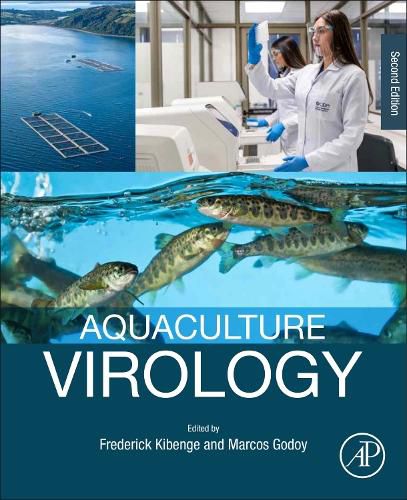Readings Newsletter
Become a Readings Member to make your shopping experience even easier.
Sign in or sign up for free!
You’re not far away from qualifying for FREE standard shipping within Australia
You’ve qualified for FREE standard shipping within Australia
The cart is loading…






In 2018, the International Committee on Taxonomy of Viruses (ICTV) approved significant changes leading to a comprehensive taxonomic scheme, allowing the global organization of the virus world (also known as virus megataxonomy). Aquaculture Virology, Second Edition updates the current knowledge on aquatic animal viruses so that all virus families (including those with many newly discovered aquatic animal viruses and those with previously unclassified aquatic animal viruses that have been now assigned) are available under one cover, increasing the number of book chapters from 37 in the first edition to 44 chapters in the second edition. The aims, philosophy, target audience, focus, and format of this second edition of Aquaculture Virology remain unchanged. Like the first edition, this book is a systematic and concise resource useful to anyone involved with or looking to move into aquaculture and fisheries. Clinical veterinarians, aquaculture disease practitioners, biologists, farmers, and all those in industry, government, or academia interested in aquatic animal virology will find this book extremely useful.
$9.00 standard shipping within Australia
FREE standard shipping within Australia for orders over $100.00
Express & International shipping calculated at checkout
Stock availability can be subject to change without notice. We recommend calling the shop or contacting our online team to check availability of low stock items. Please see our Shopping Online page for more details.
In 2018, the International Committee on Taxonomy of Viruses (ICTV) approved significant changes leading to a comprehensive taxonomic scheme, allowing the global organization of the virus world (also known as virus megataxonomy). Aquaculture Virology, Second Edition updates the current knowledge on aquatic animal viruses so that all virus families (including those with many newly discovered aquatic animal viruses and those with previously unclassified aquatic animal viruses that have been now assigned) are available under one cover, increasing the number of book chapters from 37 in the first edition to 44 chapters in the second edition. The aims, philosophy, target audience, focus, and format of this second edition of Aquaculture Virology remain unchanged. Like the first edition, this book is a systematic and concise resource useful to anyone involved with or looking to move into aquaculture and fisheries. Clinical veterinarians, aquaculture disease practitioners, biologists, farmers, and all those in industry, government, or academia interested in aquatic animal virology will find this book extremely useful.